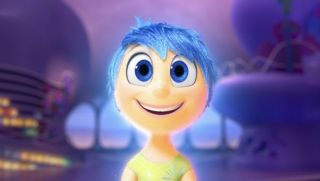Emotions
Pixar’s "Inside Out" and Plutchik’s Theory of Emotions
With a sequel on the way, "Inside Out" demystifies complex psychology.
Posted March 15, 2024 Reviewed by Tyler Woods
Key points
- "Inside Out" revolutionizes children's cinema with a profound exploration of emotional maturity.
- "Inside Out" embodies Robert Plutchik's emotional theory, showcasing universal core emotions.
- Research and the film highlight emotional competence as a predictor of social and academic success.

By Joshua Plutchik and Lori Plutchik, M.D.
Pixar's 2015 film Inside Out marked a noteworthy departure from conventional children’s cinema, venturing into the realm of emotions with unprecedented sophistication. The film centers around Riley, an 11-year-old girl navigating her identity and emotional growth. Diverging from traditional narratives of children's movies that merely graze emotions, Inside Out portrays the psychological experiences and challenges of growing up with greater depth and accuracy.
In elucidating emotional development and its impact on cognition, the film draws from American psychologist Robert Plutchik and his theory of emotions. This holds personal significance for us, as Robert Plutchik was Lori’s father and Joshua’s grandfather. Plutchik identified eight primary emotions—anger, fear, sadness, disgust, surprise, anticipation, trust, and joy—universal and biologically hardwired into human minds. Five of these emotions, depicted as colorful, engaging characters, guide Riley through her developmental changes.

Although Inside Out simplifies some aspects of Plutchik's theory for its target audience, it subtly nods to its more complex facets, such as the pairing of emotions as opposites—such as happiness and sadness. Inside Out references the concept of evolutionary adaptiveness, illustrating how emotions like fear can activate protective fight-or-flight mechanisms. The film also hints at the spectrum of emotional intensity and the potential for emotions to blend, creating complex feelings similar to mixing colors.
In accordance with developmental psychology research, the film highlights the crucial role of emotional competence—the capacity to understand and regulate one's emotions and empathize with others—in social and academic success. It portrays the evolving capacity of young children to understand, articulate, and regulate their emotions—a process influenced by both inherent temperament and the development of social-emotional skills within familial and societal contexts.
What sets Inside Out apart is its depth in confronting the challenges of growing up and nurturing emotional competence from a young age. The personification of emotions as characters in Riley's story—from Joy's radiant yellow to Sadness's contemplative blue—offers an accessible and engaging way for viewers to connect and understand their feelings.
Moreover, Inside Out demystifies complex psychology, innovatively depicting memories as colored orbs and a literal “train of thought” that provides insight into how we process experiences and emotions. The film challenges outdated views on the separation of emotion and logic, highlighting the indispensable role of emotions in decision-making.
Research in patients with damage to the ventromedial prefrontal cortex highlights the essential function of emotions in the typical appraisal of emotional cues, thus underscoring their significance in evaluating choices and making decisions. Emotions are crucial indicators, directing our focus and decisions based on our principles and previous encounters. Inside Out alludes to this interplay between emotion and cognition through the characters' impact on Riley's choices, which may be grounds for further exploration in Inside Out 2.
As anticipation for the June 2024 release of Inside Out 2 builds, the sequel promises a deeper exploration of human emotions. As Riley navigates her tumultuous adolescence, her “emotional headquarters” gets renovated with new emotions, notably Anxiety. Pixar can go in countless directions with future films, as the Inside Out series opens a conversation about mental health in a timely and entertaining way.
References
Denham, S. A., Wyatt, T. M., Bassett, H. H., Echeverria, D., & Knox, S. S. (2009). Assessing social-emotional development in children from a longitudinal perspective. Journal of epidemiology and community health, 63 Suppl 1, i37–i52. https://doi.org/10.1136/jech.2007.070797
Bechara A. (2004). The role of emotion in decision-making: evidence from neurological patients with orbitofrontal damage. Brain and cognition, 55(1), 30–40. https://doi.org/10.1016/j.bandc.2003.04.00


